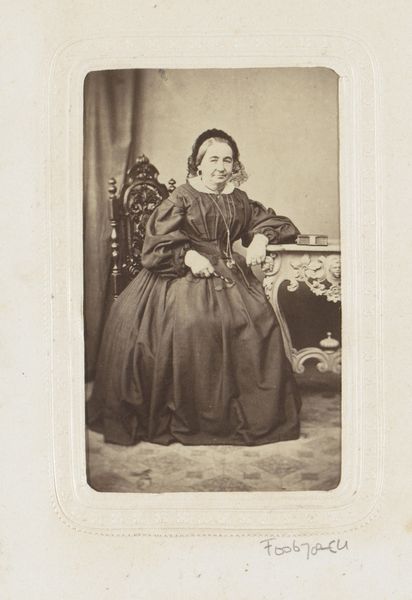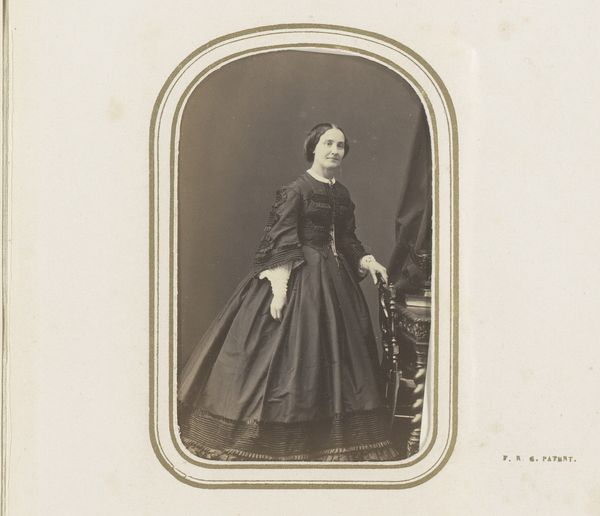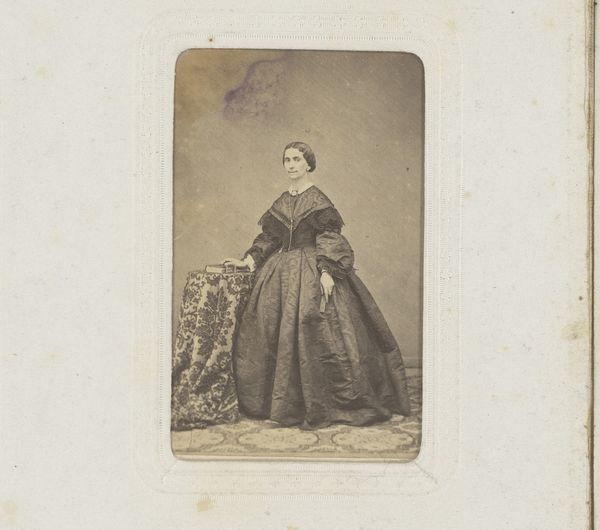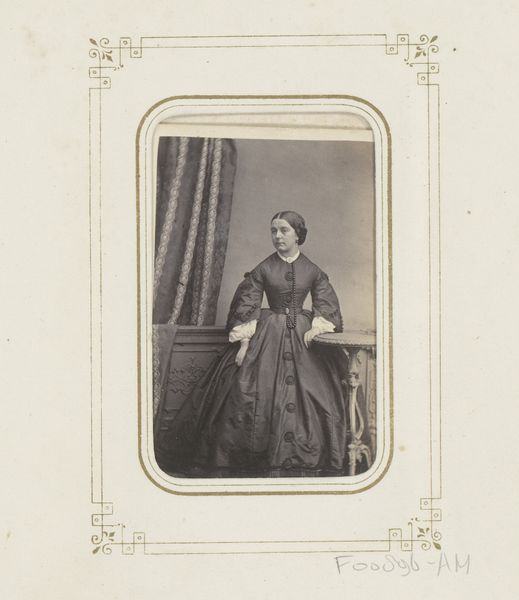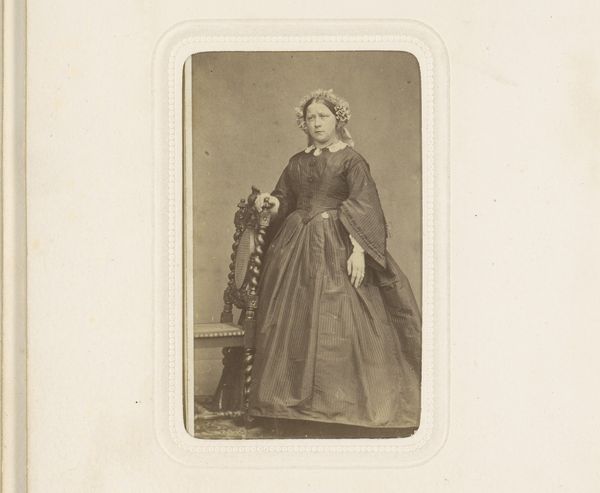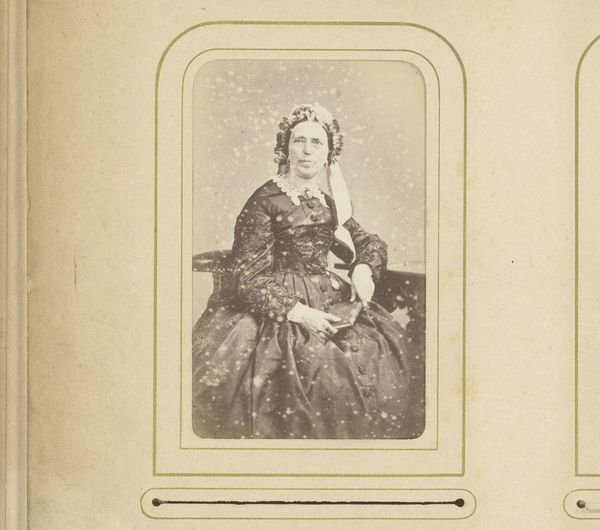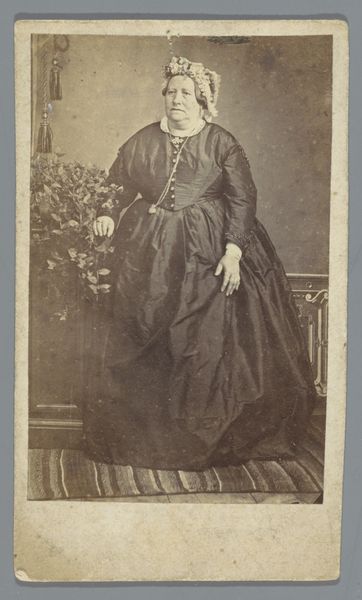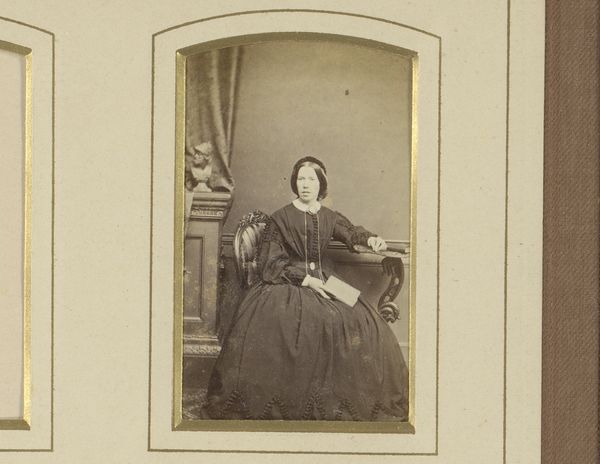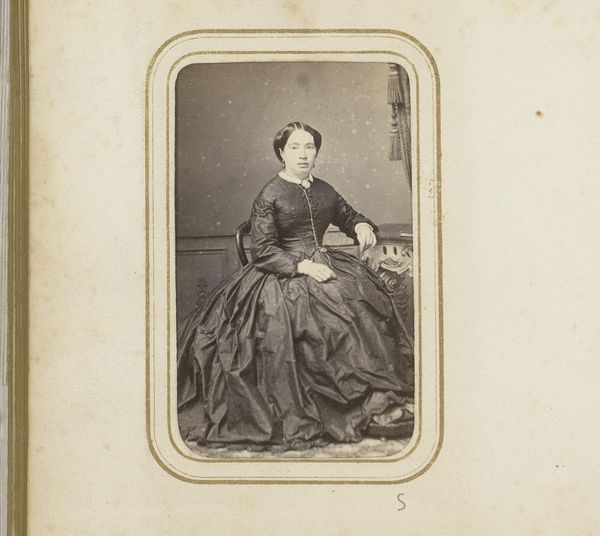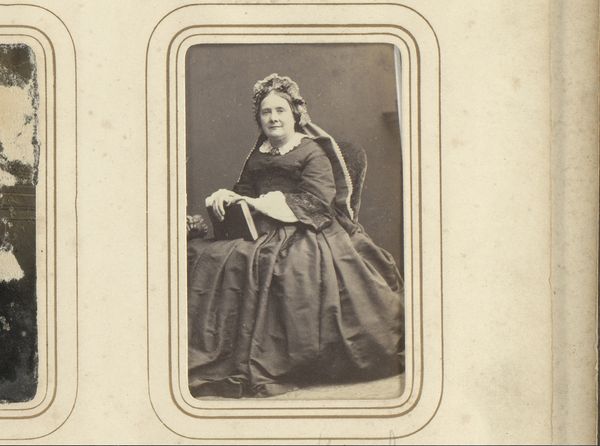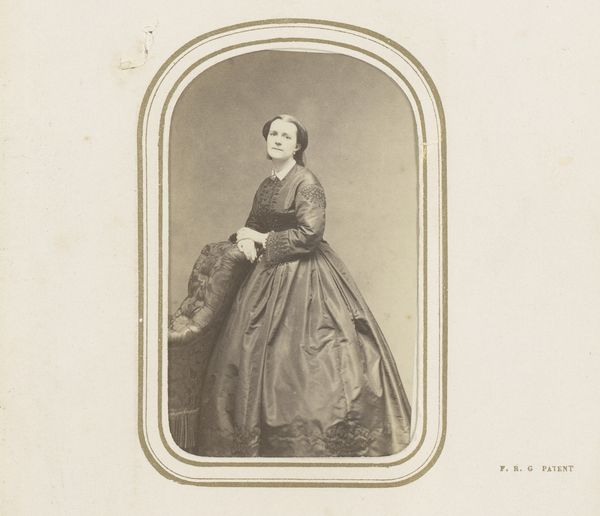
photography, albumen-print
#
portrait
#
book
#
photography
#
historical photography
#
19th century
#
albumen-print
Dimensions: height 84 mm, width 53 mm
Copyright: Rijks Museum: Open Domain
Curator: Looking at this albumen print, "Portret van een zittende vrouw met boek in de hand", created sometime between 1860 and 1900 by the Photographic Copying Offices, one immediately senses a formality dictated by the photographic conventions of the period. Editor: Yes, the severity of the dress, the subdued palette… it almost feels melancholic. There’s a gravity to her posture, sitting there next to that rather austere book. Do you think that sense of formality acted as a kind of restriction? Curator: Certainly. Photographic portraits during this time were meant to project a specific image of respectability and social standing. The sitter, likely from the bourgeoisie, is carefully positioned, and her attire and accoutrements underscore this. Even the staging appears intentionally classic, almost academic. Editor: I find myself wondering about what isn't shown. This curated presentation offers hints, perhaps, but conceals much. It’s interesting to consider how such formal portraits reinforce certain norms, certain power structures of the era concerning gender and class. It feels restrictive, and raises the question about how she might choose to represent herself outside of such conventions. Curator: Precisely. The conventions of portraiture dictated a kind of performance. A way for citizens to perform and solidify their social roles through documentation. We cannot know how or if she embraced the roles prescribed by this society. Still, understanding how photography acted as a social and political tool is fascinating here. Editor: For me, this image also acts as a point of departure, sparking a conversation on 19th-century identity. It begs questions about representation, and makes me reflect on how we choose to present ourselves today versus what's truly "us". Curator: Indeed, the layered nature of images from the past makes engaging with them such a stimulating and often very complex undertaking. It is as though we view her through time and across social strictures, through both her perspective, and ours.
Comments
No comments
Be the first to comment and join the conversation on the ultimate creative platform.
